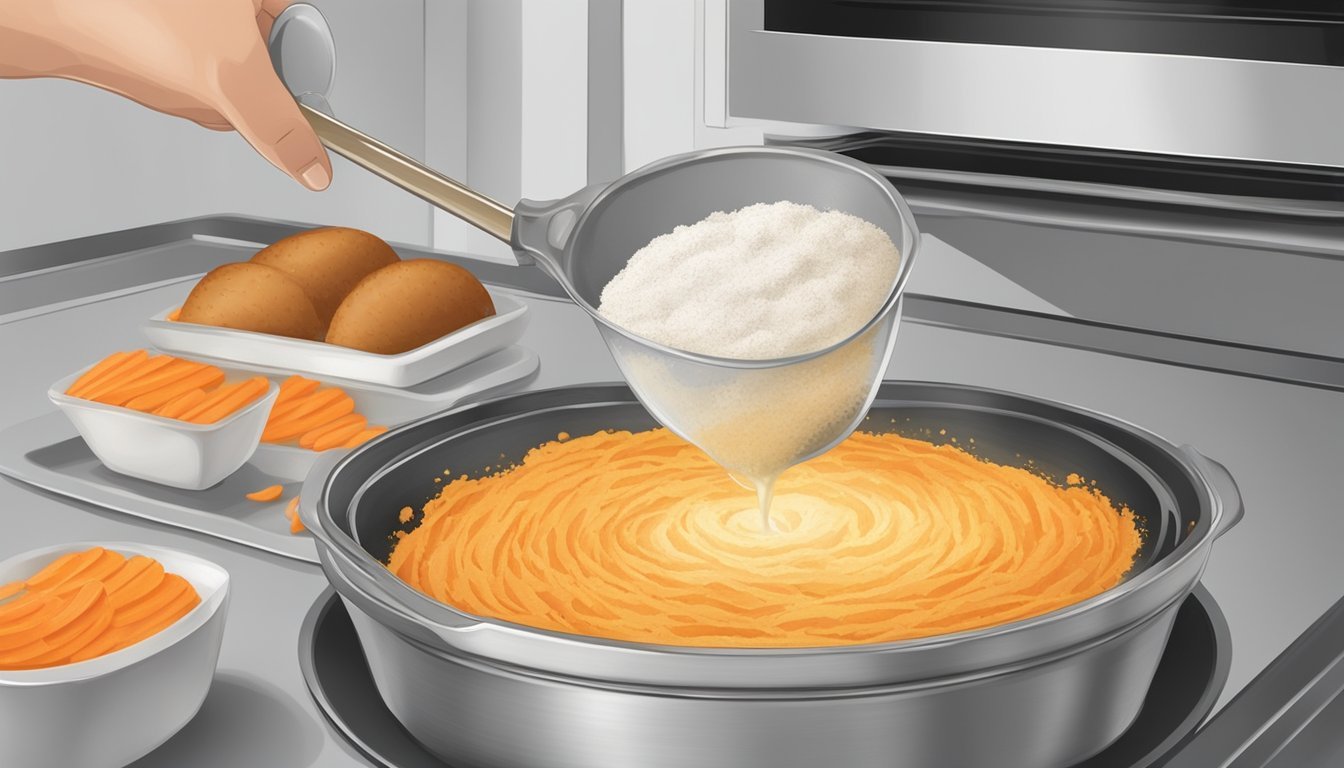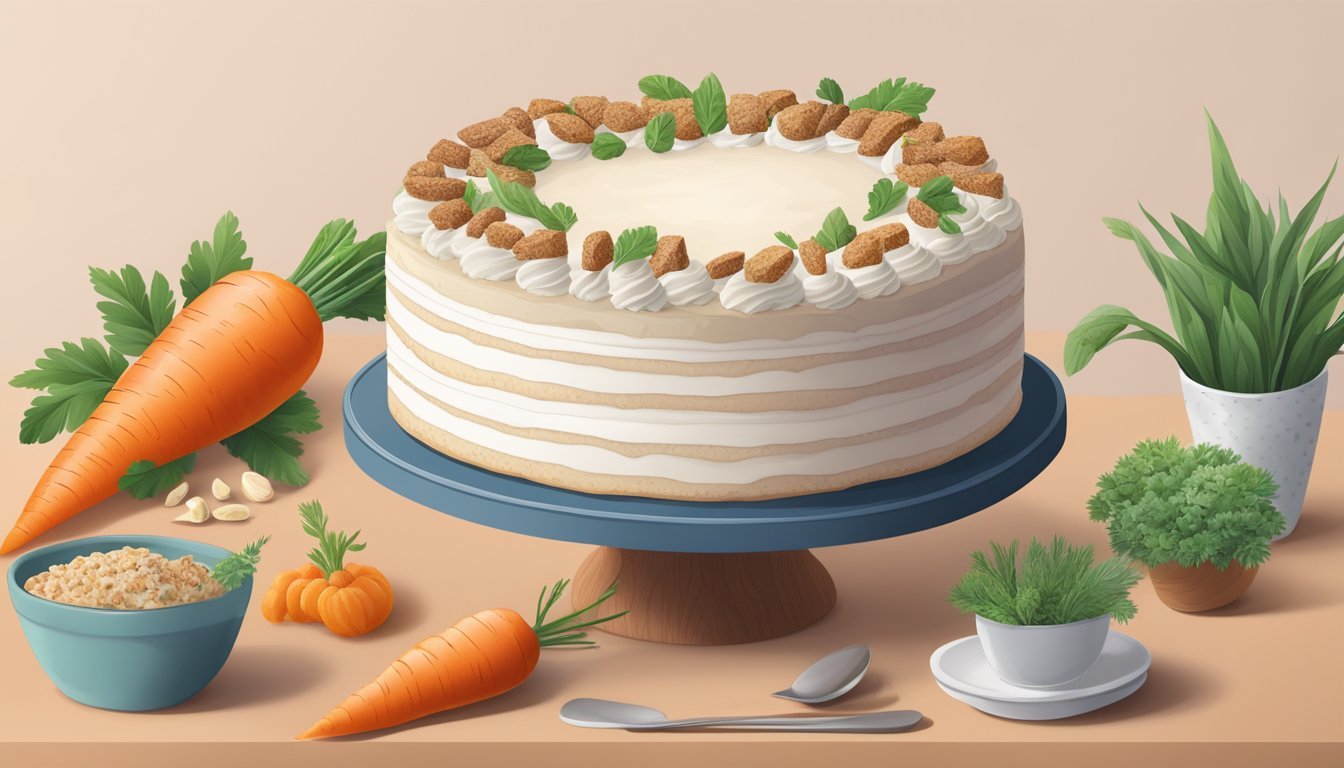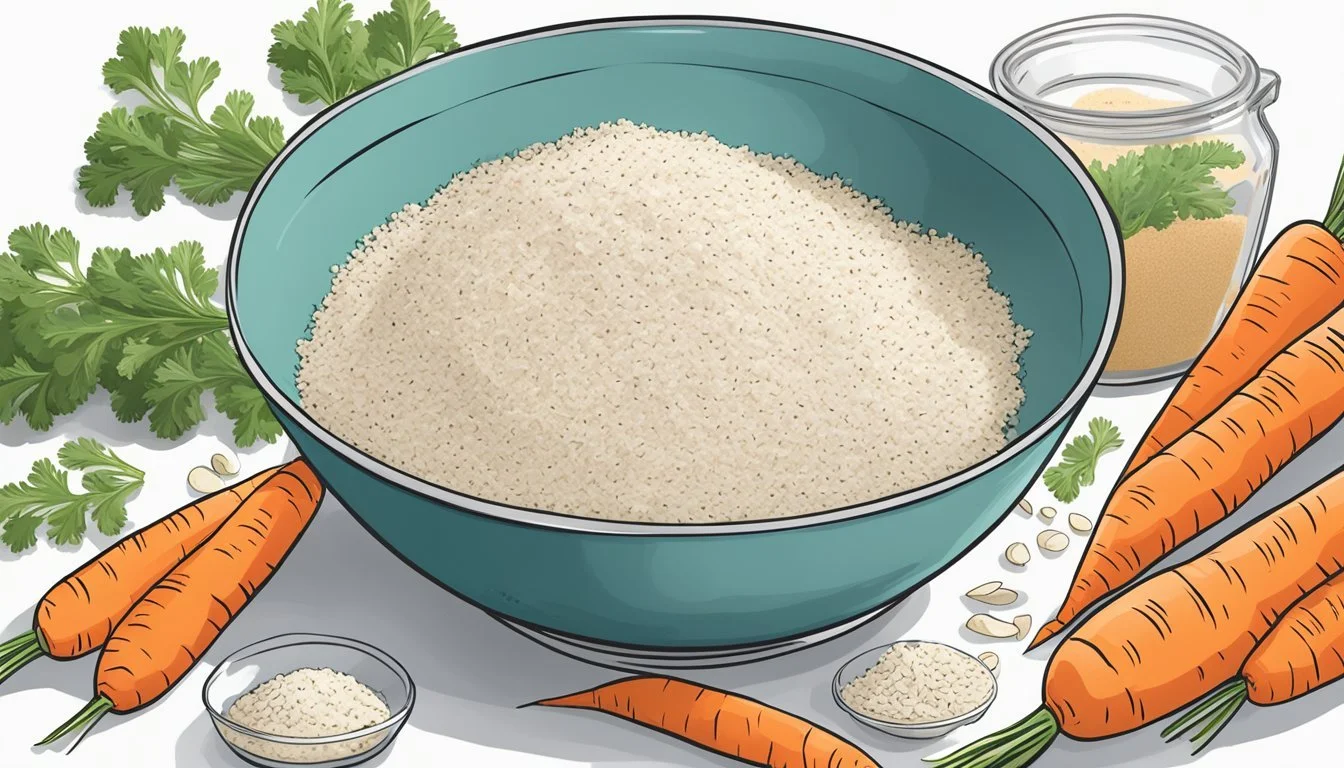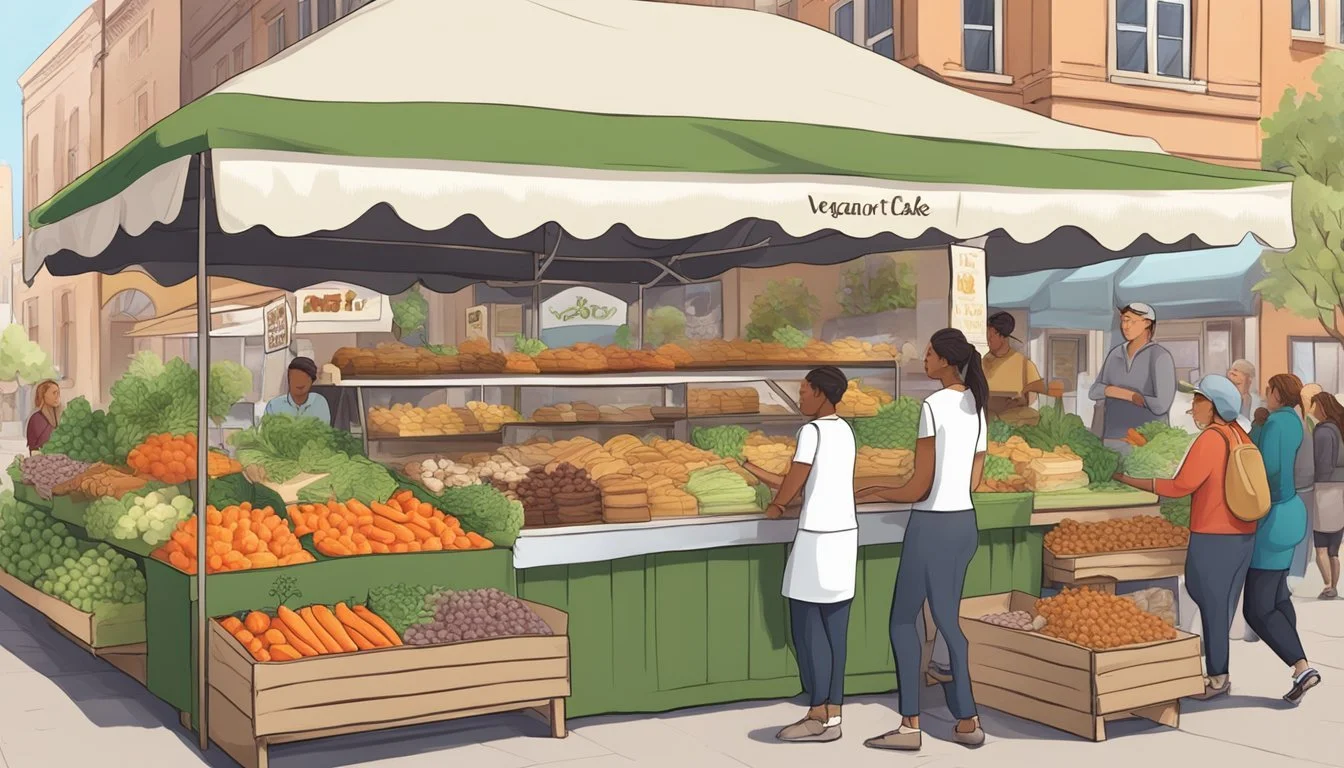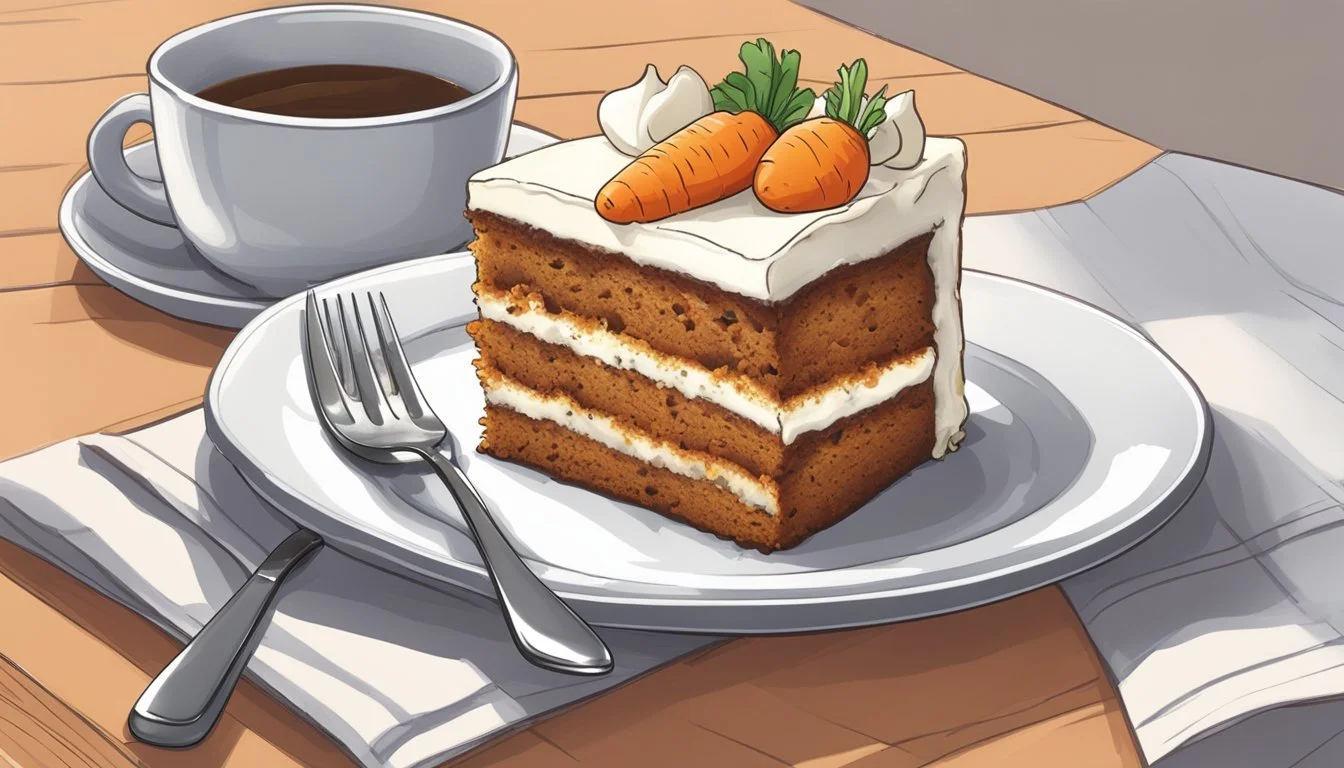Is Carrot Cake Vegan?
Unveiling the Truth About This Popular Dessert
Carrot cake is traditionally made with ingredients such as eggs, butter, and cream cheese, making it unsuitable for a vegan diet. However, the versatility of this beloved dessert has opened the door to numerous vegan variations that maintain its moist texture and spiced flavor profile. An array of vegan carrot cakes has emerged, employing plant-based substitutes for the conventional animal-derived ingredients.
These vegan adaptations often include alternative binders like flax or chia seeds in place of eggs and plant-based milks in lieu of dairy milk. The cream cheese frosting, a signature of classic carrot cake, is reimagined using vegan-friendly ingredients such as cashews, coconut milk, or commercially available vegan cream cheese. Thanks to these inventive solutions, vegans can enjoy carrot cake without compromising on the ethics or taste associated with a plant-based lifestyle.
As more individuals embrace veganism, the demand for vegan desserts continues to grow, which has led to carrot cake becoming a popular choice in vegan baking. This shift has not only catered to those following a vegan diet but also those with dietary restrictions related to dairy or eggs, making carrot cake more accessible and inclusive.
Understanding Veganism
Before exploring the concept of a vegan carrot cake, it is important to understand the principles of veganism and the common substitutes available to maintain a diet free from animal products.
Defining Vegan
A vegan diet excludes all forms of animal exploitation and cruelty, opting for an entirely plant-based selection of foods. This means no meat, dairy, eggs, or any other products derived from animals. Vegans aim to live a dairy-free and ethical lifestyle that extends beyond their food choices to include clothing, cosmetics, and other consumer goods.
Common Vegan Substitutes
The popularity of veganism has led to an extensive range of substitutes to replicate the flavors and textures commonly found in animal-based products. Here’s a brief overview of common vegan substitutes:
Dairy Alternatives: These include products such as vegan butter, made from plant oils, and vegan cream cheese, typically derived from nuts like cashews or almond milk.
Milk: Plant-based milks such as almond, soy, oat, and coconut milk are staples in a vegan diet.
Eggs: For baking, flax eggs—a mixture of ground flaxseeds and water—serve as an excellent binding agent.
Meat: Beans, lentils, tofu, tempeh, and seitan (What wine goes well with seitan?) are popular protein-rich alternatives.
Sweets: Vegan desserts avoid traditional baking ingredients like butter and eggs, instead using items from the list above to create treats that align with vegan ethics.
The selection of vegan substitutes continues to grow, making it easier for individuals to enjoy a diverse range of vegan dishes, including desserts like carrot cake, without compromising on taste or texture.
Essentials of Carrot Cake
The essence of carrot cake lies in its unique combination of sweet and spicy flavors, coupled with a moist and dense crumb, achieved through specific ingredients, including its namesake: carrots. This section explores its roots, the necessary components, and the crucial role carrots play in both the flavor and texture of the cake.
Historical Background
Carrot cake, as known today, evolved from medieval carrot puddings enjoyed by people across Europe. It gained popularity in the 20th century as a sweet treat that leverages the natural sweetness of carrots. Historically, the addition of carrots was also a practical choice when sweeteners were scarce or expensive.
Key Ingredients
The trademark taste and texture of carrot cake are the result of a well-balanced combination of ingredients. Here's a list highlighting the key components:
Flour: Forms the structure of the cake.
Baking Powder & Baking Soda: Chemical leaveners that allow the cake to rise.
Oil: Typically, a neutral oil like canola ensures a moist crumb.
Sugar: Often brown sugar is used for its moist texture and rich flavor.
Carrots: Grated or shredded carrots are essential.
Eggs: Add structure and stability.
Spices: Cinnamon, nutmeg, and ginger infuse warmth.
Salt: Enhances all flavors.
Vanilla Extract: Adds aroma and depth.
Role of Carrots in Flavor and Texture
Carrots are central to this dessert not just in name but also in function. They perform the following roles:
Flavor: Carrots contribute a subtle sweetness that complements the spices.
Texture: Grated or shredded carrots add moisture, which makes the cake tender while also giving it a slight chewiness and density.
These elements come together to create the characteristic taste and texture profile of carrot cake, making it a beloved dessert across various culinary traditions.
Transitioning to Vegan Carrot Cake
When making vegan carrot cake, the shift revolves around replacing traditional ingredients with plant-based alternatives while maintaining the moist texture and rich flavor that classic carrot cake is known for.
Vegan Ingredient Alternatives
In traditional carrot cake recipes, eggs, dairy products, and sometimes even butter are staple ingredients. However, to transform carrot cake into a vegan delight, one must find suitable vegan alternatives that do not compromise taste or texture.
Dry Ingredients Replacement:
Eggs: A common substitute for eggs in vegan baking is applesauce, which adds moisture without the use of animal products. Typically, 1/4 cup of applesauce can replace one egg.
Butter: Vegan recipes often call for oil as a substitute for butter. Canola oil or other vegetable oils are popular choices due to their mild flavor.
Milk: Dairy milk can be replaced with almond milk or other plant-based milks.
Frosting Alternatives:
Instead of traditional cream cheese frosting, a vegan cream cheese frosting can be created using plant-based cream cheese and butter.
Vegan Carrot Cake Variations
One can introduce various add-ins and variations to the vegan carrot cake to enhance its flavor and texture.
Texture and Flavor Enhancers:
Nuts: Walnuts or pecans can be added for a crunchy texture.
Fruit: Some bakers opt to include raisins or even pineapple for natural sweetness and a bit moister crumb.
Additional Variations:
For those who enjoy chocolate, vegan chocolate cake versions can include cocoa or dairy-free chocolate pieces.
While not a necessity for all recipes, some individuals appreciate the inclusion of a healthy twist, such as whole wheat flour or flax seeds.
Crafting a vegan carrot cake recipe involves careful selection of dairy-free and egg-free ingredients, but one can still achieve a cake that is just as indulgent as its traditional counterpart. By experimenting with these alternatives and variations, bakers can offer a delicious, moist, and inclusive dessert without any animal products.
Preparation and Baking Techniques
The preparation of a vegan carrot cake involves specific steps to ensure a flavorful, well-textured outcome. Carefully measuring ingredients, mixing them correctly, and baking with attention to temperature and time are crucial to the cake's success.
Mixing Method
In vegan baking, the mixing method is paramount to achieving the right texture. Start by lining your cake pans with parchment paper to prevent sticking. One should use a large mixing bowl and whisk together the flour, baking soda, baking powder, and spices to ensure they are well combined. In a separate bowl, mix wet ingredients like plant milk, vanilla, and oil. Combine wet and dry ingredients with a whisk until just mixed; overmixing can affect the cake's final texture.
Baking Process
Preheating the oven to 350°F (180°C) is a crucial first step in the baking process. Pour the batter into the prepared pans and smooth the top with a spatula. The baking time varies depending on the size of the pans used – typically between 25-30 minutes for smaller pans or up to 35-40 minutes for a larger single layer. A toothpick or knife inserted in the center should come out clean, indicating the cake is done.
Texture Considerations
The texture of a vegan carrot cake should be light and moist, which requires precise ingredient balance and baking technique. A food processor can be used to shred carrots evenly for consistent moisture distribution. Fold in shredded carrot and any additional mix-ins, such as nuts, until just combined to avoid a dense or gummy texture. Using ingredients at room temperature can help to ensure that the cake cooks evenly throughout.
Vegan Frostings and Toppings
Choosing the right vegan frosting and toppings can transform a simple carrot cake into a gourmet delight. Vegan frosting can be as creamy and satisfying as traditional options, while toppings can add texture and flavor diversity.
Vegan Cream Cheese Frosting
Vegan cream cheese frosting is a staple for carrot cakes. To make it, one combines vegan cream cheese with powdered sugar and a small amount of plant-based milk or melted coconut oil for spreadability. Lemon juice may be added for a tangy flavor reminiscent of classic cream cheese frosting. Sweetness and consistency are typically perfected by adding powdered sugar gradually until the desired thickness is achieved.
Alternative Vegan Toppings
While vegan cream cheese frosting is popular, a variety of vegan toppings can be used:
Chocolate: Melted vegan chocolate can be drizzled over the cake or whipped into a frosting for chocolate lovers.
Shredded Coconut & Crushed Walnuts: For a crunchy texture, sprinkle shredded coconut or crushed walnuts on top of the frosting.
Fruit and Syrups: Fresh fruit, fruit compotes, or maple syrup can offer a sweet contrast to the tang of the frosting.
These toppings can be used alone or combined to create a more complex flavor profile and appealing presentation.
Finishing Touches
Once your vegan carrot cake has baked and cooled, the final embellishments are key to making it a memorable dessert. Decorating with flair and understanding the best practices for serving and storing will ensure that every slice is as delicious as it is visually appealing.
Decorating Tips
When it comes to decorating a vegan carrot cake, a smooth, rich layer of vegan cream cheese frosting typically serves as the canvas. For an extra touch of elegance, one can:
Pipe rosettes or simple swirls to add professional flair.
Sprinkle chopped nuts such as pecans or walnuts for a satisfying crunch.
Top with edible flowers or candied carrot curls for a gourmet presentation.
Dust lightly with cinnamon or nutmeg to accentuate the cake's warm spiciness.
For those preparing the cake for special occasions such as birthdays, personalizing with piped vegan frosting messages or themed decorations can add a celebratory touch.
Serving and Storing
Serving a vegan carrot cake at the ideal condition requires attention to texture and temperature. The cake should be served at room temperature to ensure the frosting is soft but not runny. If prepped as cupcakes, one can display them on a tiered stand for an enticing arrangement at gatherings or dessert tables.
For storing, remaining cake or leftover cake should be covered with an airtight container to retain moistness. Vegan carrot cake may be kept at room temperature for a day or in the refrigerator for up to a week. One can also:
Freeze the unfrosted cake or cupcakes wrapped in plastic for up to 3 months; thawed and frosted when needed.
Separate slices with parchment paper before freezing to prevent them from sticking together.
Properly decorated and stored vegan carrot cake remains an irresistible dessert, ensuring that every bite is enjoyed at its best.
Adapting for Dietary Restrictions
Carrot cake can be modified to accommodate various dietary restrictions without compromising on taste or texture. Whether someone is avoiding gluten or nuts due to allergies or personal choice, alternative ingredients can be utilized effectively.
Gluten-Free Options
For those who are gluten-intolerant or have celiac disease, replacing traditional all-purpose or whole wheat flour with gluten-free alternatives is essential. A variety of gluten-free flours are available, including:
Almond flour
Buckwheat flour
Using a pre-mixed gluten-free all-purpose flour blend is often the easiest substitution, as it's designed to mimic the properties of wheat flour. This blend usually contains a mix of rice flour, potato starch, and xanthan gum, which helps to bind the ingredients, ensuring that the carrot cake retains its structure and moisture.
Nut-Free Alternatives
For individuals avoiding nuts, finding a suitable replacement for common ingredients like chopped walnuts in carrot cake is important. Here are some nut-free alternatives that can add similar texture and flavor:
Seeds: Pumpkin or sunflower seeds make for a good crunch.
Dried fruit: Chopped dates or raisins offer a chewy texture.
Specialty flours: Oat or flaxseed flour can substitute for nut-based flours while adding fiber.
One must ensure that any alternative ingredients are truly nut-free as cross-contamination can occur during manufacturing. Always read labels carefully and opt for brands that certify their products as "nut-free" when necessary.
Advanced Vegan Baking
Baking vegan cakes, such as carrot or chocolate cake, has become sophisticated, allowing for a variety of textures and flavors that can be achieved with innovative ingredients and methods.
One Bowl Recipes
Vegan baking can be as easy as traditional baking, with one bowl recipes being a noteworthy trend. They allow for convenience and efficiency, particularly when it comes to vegan cakes. For example, a vegan vanilla cake or vegan chocolate cake can be created with minimal cleanup. The process typically involves combining dry ingredients like flour, sugar, baking powder, and spices, followed by incorporating wet ingredients such as oat milk, maple syrup, and sometimes hot water to activate the leavening agents.
Vegan Banana Muffins: Often made in a single bowl, the recipe entails blending mashed bananas, a plant-based milk, sweetener, and a binding agent like flaxseed meal, before gently folding in the flour and leavening agents.
Vegan Chocolate Cake: The wet ingredients, including a dairy-free milk, vinegar or lemon juice to curdle it, and oil, are whisked together before the dry ingredients are sifted in and combined until smooth.
Innovative Vegan Baking Ingredients
Vegan baking thrives on the use of innovative ingredients that mimic the properties of their non-vegan counterparts.
Binders: Commonly, flaxseeds mixed with hot water, known as flax eggs, are utilized as a binder in recipes such as vegan carrot cake. They provide the necessary structure to the cake.
Dairy Substitutes: Oat milk serves as an excellent dairy replacement due to its neutral taste and creamy consistency, enhancing the moistness of cakes.
Sweeteners: Maple syrup is a favored vegan sweetener that imparts a rich flavor profile to banana muffins and other baked goods, while also providing moisture.
By implementing these one bowl recipes and innovative ingredients, one can master the art of vegan baking, producing delectable and complex baked goods that are sure to impress.
Practical Baking Tips
In vegan carrot cake baking, precision and technique are vital to achieving the perfect moist and spiced cake. Adhering to a few core principles can make the difference between success and an underwhelming result.
Measuring Accurately
Ensuring that ingredients are measured accurately is fundamental for the cake's consistency and structure. A baker should:
Weigh ingredients when possible, as it is more precise than volume measurements.
Use measuring spoons for small quantities of baking powder, baking soda, and spices to maintain the balance of flavors.
Grate the carrots using a box grater to get uniform shreds that blend well into the batter without weighing it down.
Ingredient Measurement Tool Used Flour grams or cups Kitchen scale/cups Baking Powder teaspoons Measuring spoons Baking Soda teaspoons Measuring spoons Spices teaspoons or tbsp Measuring spoons Carrots (grated) cups Box grater/cups
Avoiding Common Mistakes
Baking a vegan carrot cake requires avoiding some common pitfalls that can affect the cake's texture:
Do not overmix the batter; it can lead to a dense cake. Mix just until the dry and wet ingredients are combined.
Choose the right baking pan size and always line it with parchment paper to prevent sticking; a 9×13-inch pan, or two 8-inch round pans, are commonly used.
Make sure vegan butter or oil is at the correct temperature; if a recipe calls for melted butter, it should be fully liquid but not too hot to touch.
Understanding these tips can help any baker create a vegan carrot cake that is as delightful in texture as it is in taste.
Community and Culture
Carrot cake, traditionally teeming with eggs and dairy, has found a new expression within vegan circles, intertwining baker's creativity with cultural values of animal welfare and environmental responsibility. The shift to plant-based versions of beloved desserts is a testament to the evolving landscape of community and culinary traditions.
Vegan Baking in Social Media
In the realm of Instagram and Facebook, vegan baking surges as a vibrant trend, uniting communities around shared values. Visual-driven platforms showcase the artistry of vegan desserts, including carrot cake, allowing for a celebration of both aesthetics and ethics. Bakers, influencers, and food enthusiasts share their culinary creations, crafting a tapestry of recipes and techniques that reach worldwide audiences. They engage their followers by demonstrating the possibility of indulging in cherished sweets, like carrot cake, without compromising their vegan lifestyle.
Popular tags: #VeganBaking, #VeganCarrotCake, #PlantBasedDessert
Key influencers: Names often synonymous with creativity in vegan baking
Engagement: Through comments, shares, and likes, the vegan baking community thrives on social media
Celebrating with Vegan Desserts
The significance of vegan desserts extends beyond the everyday to feature prominently in celebrations. They become culinary centerpieces at occasions like birthdays, weddings, and anniversaries, challenging the conventional notion that dairy and eggs are irreplaceable in celebratory fare. Carrot cake, with its rich history and appeal, has become an especially beloved choice for festivity, reflecting how culture shapes and is shaped by food practices.
Vegan caterers: Rising demand has led to an increase in professional bakers specializing in vegan desserts
Recipe innovation: New ingredient substitutions ensuring the favorite flavors and textures are maintained without animal products
Vegan desserts like carrot cake embody a communal evolution where taste and tradition are honored in tandem with modern ethical and dietary preferences.
Conclusion
Traditionally, carrot cake is not vegan as it typically contains eggs, dairy-based butter, and often cream cheese frosting. However, with the rise of veganism, numerous recipes and methods have been developed to create delectable vegan carrot cakes. These cakes substitute animal products with plant-based alternatives without compromising on taste or texture.
Key ingredients in vegan carrot cakes might include:
Flour: A base ingredient for any cake.
Leavening agents: Baking soda and baking powder to ensure that the cake rises.
Spices: Cinnamon and nutmeg are common for flavor.
Sweeteners: Sugar, maple syrup or alternatives.
Oil: Often coconut or canola oil replaces butter.
Non-dairy milk: Almond, soy, oat, or other plant-based milks.
Vegan egg substitutes: Flax eggs are a popular choice.
Preparing a vegan carrot cake involves:
Preheating the oven to the required temperature, commonly between 340°F to 350°F (170-180°C).
Lining cake pans with parchment paper and non-stick spray.
Mixing dry and wet ingredients separately before combining them.
Grating carrots finely, which are then folded into the batter.
Baking until the cake is set and a toothpick inserted in the center comes out clean.
A vegan cream cheese frosting, often made from plant-based cream cheese and butter alternatives, is the finishing touch. It's usually flavored with vanilla and sweetened to taste. The result is a cake that is moist, rich, and satisfying for both vegans and non-vegans alike.



